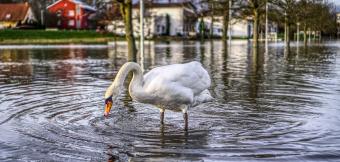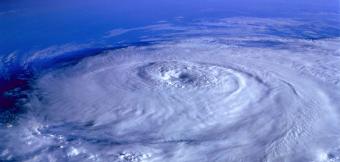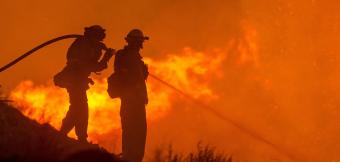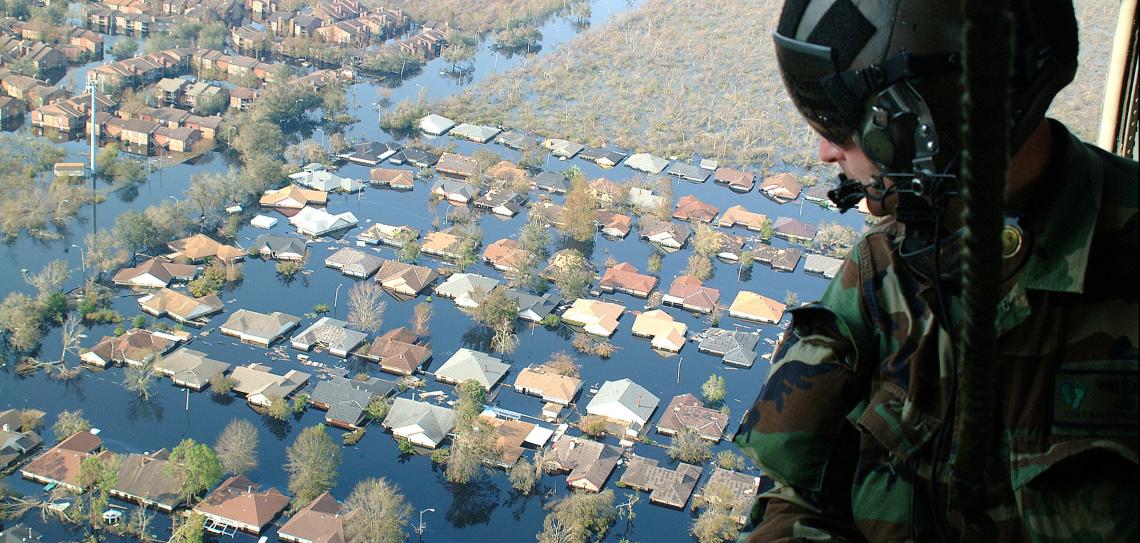
Learn to survive an emergency
A likely result of many weather disasters is temporary grid collapse. For most of us that means no electricity, mains water or heating. Plan in advance to ensure you have drinking water, food, heat, shelter, safety and access to up to date information until the grid is restored.
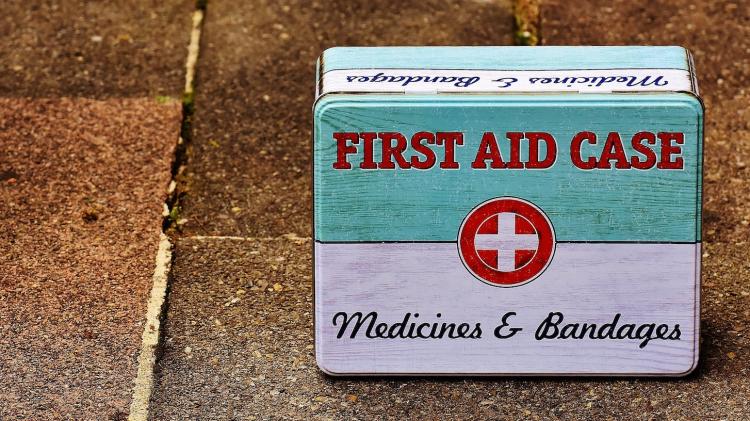
Drinking water
Power failure generally means no mains water supply, while water contamination is a serious threat to your health. Keep a safe supply of drinking water in watertight containers. You'll need about 1 gallon/ 5 litres per person per day for a minimum of three days. When a disaster approaches, fill your bath and sinks so you've got a reserve of clean water on hand.
Flood waters are usually extremely contaminated, so consider simple water purification technologies such as tablets or filters. In an emergency treat surface water with iodine (5 drops per quart/litre) and pure chlorine bleach (4 drops per quart/litre) and allow to stand for 30 minutes.
When water is scarce, don’t flush the toilet unless you really need to. You can flush with surface water from a bucket. If you have no water for flushing, use a large bucket with a cover and paper or sawdust.
Food
Ensure you have a supply of dried or canned food. If it’s dried, you'll need clean water to make it. Make sure that some of the food can be eaten cold, as you may not have a domestic power supply. Tinned baked beans, soup and rice pudding make ideal emergency food. Don't rely on frozen food as the electricity may fail. If it's cold eat more than usual and have hot drinks. If it's hot, stay hydrated.
Shelter
Generally you should stay at home unless you've sufficient time to get away; listen to a local radio station for the latest advice. Often leaving will put you at greater risk than staying. Decide well in advance whether to evacuate, and be sure the evacuation route is safe before you do.
Where to shelter depends on the nature of the emergency. If you live by a slope and there could be a mudslide, leave. If it's a tornado, get in a tornado shelter or 'safe room'. If it's a flood, go upstairs. If it's a wind event, stay low to the ground, away from windows and under a table, or go underground.
Wherever you shelter, keep an emergency kit with you: a first-aid kit, flashlight/ head torch, bike helmet, battery-powered radio, bottled water, spare phone battery, blanket and emergency food. Keep it in an obvious place at home and check it annually; remember you may have very little warning of a weather emergency.

Heat and light
If the grid goes down in winter, there are three ways to stay warm. Firstly, conserve heat. Close all doors, block drafts, close curtains. Live and sleep together in one room, away from prevailing winds and with windows insulated with blankets sealed up with duct tape.
Secondly, generate heat. Use a generator, propane heater or wood stove, but not an open flame fire as it’s a fire and suffocation risk. If the sun shines, make passive solar gain by opening the curtains.
Thirdly, dress warm. Wear long underwear or pyjamas, several thin layers, a thick coat, double gloves and socks, and a hat/hood (or two). Wear a hat when you sleep. Avoid getting wet, including from sweat; wash with baby wipes and remove layers if you're overheating.
Have a powerful flashlight, head torch or storm lantern handy, and check the batteries before the disaster arrives. It will provide a vital source of light if the electricity fails and may be important for emergency signalling.
Up-to-date information
A battery-powered radio is still the best way to get news updates, and the batteries should last for months. Smart phones transmit critical information and can summon help, but the battery life is poor so keep a battery pack handy.
How to survive outside
The worst case scenario is being caught outside in extreme weather. People die this way every year. But you should survive if you've planned ahead and know how to act.
Much of what you read or see about 'survival' is misleading; a story about survival is a story about someone who’s already made a mistake. Generally, simply stay put in the nearest adequate shelter, don’t take risks, and wait for help to come. A few blankets, bottles of water and energy bars mean you can survive a storm in your car. A small radio means you can to listen to weather forecasts and emergency instructions. A charged mobile phone means you can call for help.
Detailed travel plans left with a trustworthy person at home ensures that someone will soon come looking for you. Being cold, scared, lost or hurt doesn't help good decision making, so just remember three things; stay put in shelter, avoid risks, and wait for help.
Picture credits: 1) U.S. Air Force photo by Master Sgt. Bill Huntington - publicdomainfiles.com 2) Alexas_Fotos - Pixabay.com 3) Matthew Brodeur - Unsplash.com
Create an emergency survival kit
Be aware of what is happening in your local area and keep an eye out for extreme weather patterns
Care for vulnerable neighbours during an emergency
Campaign for greater government awareness about climate risks

